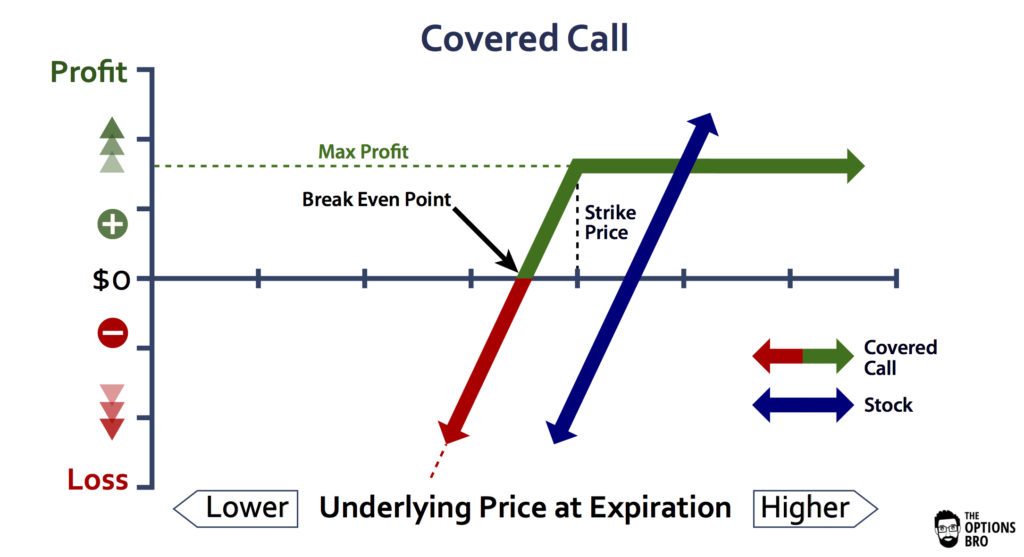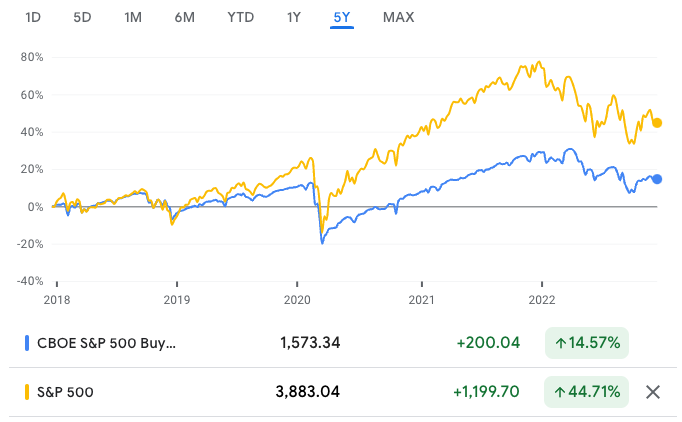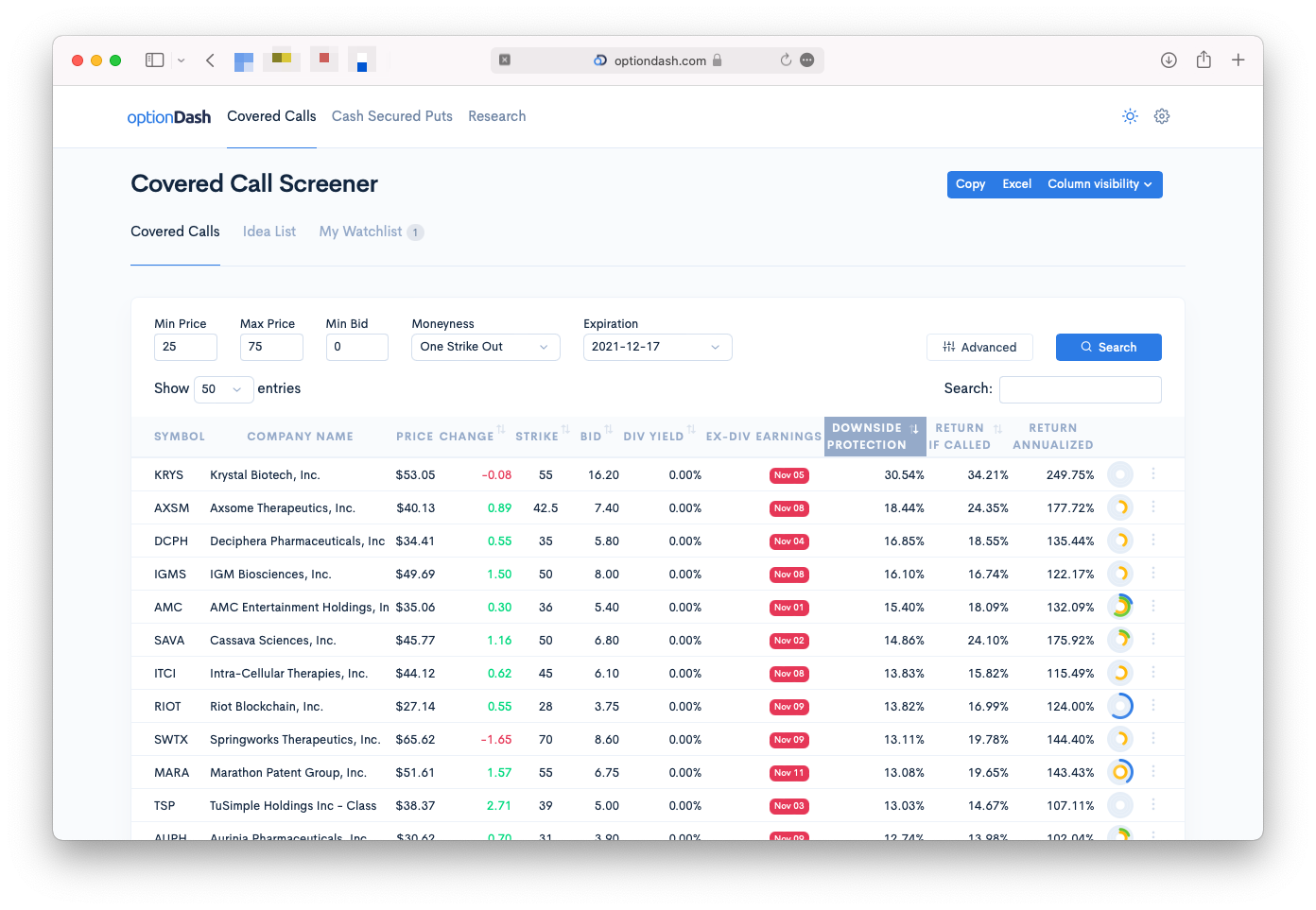What Are the Downsides of Covered Calls?
Shelley
Many investors looking to generate income come across covered calls at some point during their research. While there are plenty of explanations about why covered calls are beneficial, understanding the risks can be a little more challenging. But understanding these risks is essential to securing desirable target financial outcomes. Let’s take a closer look at the risks and downsides of covered calls and whether the benefits outweigh them.
Covered calls aren't risk-free – here are the risks to remember and strategies you can use to mitigate them. Click To TweetWhat is a Covered Call?
Covered calls are an options strategy that involves selling a call option against an existing long stock position. In effect, the call option caps the upside potential of the long stock position in exchange for an immediate option premium. As a result, many investors use covered calls to generate income on stocks with a neutral to mildly-bullish outlook.

Covered call options strategies have a max profit equal to the strike price plus the option premium. Source: The Options Bro
There are several reasons to use covered calls:
- Premium Income – Investors can generate regular income from covered calls to augment dividend income and support their retirement or other causes.
- Sell the Stock – Investors can use covered calls to generate extra income when selling stock. For example, they can write in-the-money call options for higher premiums.
- Downside Protection – Investors can sell covered calls to provide limited downside protection. The income generated from the sale can offset or buffer subsequent losses.
Downsides of Covered Calls and The Covered Calls Risks
Covered calls are a low-risk option strategy, but that doesn’t mean they’re risk-free. On the contrary, covered calls entail the same risks as long stock ownership with more limited upside potential. As a result, investors must ensure the income generated from these strategies offset the potential costs and deliver on their investment objectives.
The two most significant risk factors include:
- Price Decline – A covered call’s breakeven point equals the purchase price minus the option premium. You could lose money on the overall position if the stock moves below that level.
- Opportunity Cost – A covered call obliges you to sell the stock at the strike price. Therefore, if the stock rises significantly above that level, you could experience a high opportunity cost.

The CBOE S&P 500 BuyWrite Index significantly underperformed the S&P 500 Index over the past five years but outperformed over the past year. Source: Google Finance
Covered calls tend to underperform during bull markets and outperform during bear markets. After all, when stock prices are rising, there’s a significant opportunity cost. And when stock prices are falling, covered calls provide a buffer against some of the losses. So, investors should always consider these risks in the broader market context.
Are They Worth It?
Covered calls may be relatively low risk, but is the income worth the downside risk or opportunity cost?
The Sharpe ratio is a common way to measure risk-adjusted returns. In effect, it measures the return earned above the rate of return on risk-free short-term U.S. Treasuries relative to the risk taken. Since covered calls inherently reduce volatility by limiting upside, they result in a higher Sharpe ratio than holding the long equity position alone.
Of course, the Sharpe ratio doesn’t account for the skewness of returns. Capping the upside potential of a stock may reduce volatility, but it increases the negative skewness of returns. As a result, investors would be better off using the Sortino ratio, which only penalizes returns falling below an investor-specified target.
In addition to overcoming negative skewness, the benefits of covered calls must exceed the higher tax and transaction costs. For example, frequently writing covered calls or buying and selling underlying stock may trigger commissions and short-term capital gains. Meanwhile, you typically pay short-term capital gains on any option premium income. Taxes aren’t a concern in retirement accounts, so many retirees choose to implement a covered call strategy in their IRA.
Mitigating These Risks and Downsides of covered calls
Covered calls may not be as attractive as they seem on the surface, but that doesn’t mean they don’t have a role in your portfolio. Covered calls are ideal for investors seeking portfolio income. Growth oriented investors should take a deep look at the downsides of covered calls to asses their fit within their portfolio. With the right risk mitigation strategies in place, they can effectively generate extra income from your portfolio while reducing downside risk during a bear market or uncertain times.
There are several steps you can take to reduce risk:
- Set a Goal – Investors should start by setting a goal for their covered call strategies. Are you looking to achieve a certain level of income? And if so, what are you willing to sacrifice in terms of upside potential? How will it fit into your overall portfolio?
- Find the Right Stocks – Investors should select low-risk stocks without near-term market-moving events. For example, the company shouldn’t have an upcoming earnings event or operate in a high-risk sector if you don’t want to take on excessive risk.
- Choose the Right Options – Investors should write call options with the optimal expiration date and strike price to maximize income and minimize risk. And they should ensure that the return potential matches their expectations or requirements.
- Carefully Manage Positions – Covered call strategies require regular follow-up. For instance, if the stock rises or falls, you may have to roll up or roll out an option.

OptionDash makes it easy to find opportunities in real-time while weeding out companies based on fundamental or other criteria. Source: OptionDash
OptionDash can help streamline many of these steps by crunching the numbers on covered call opportunities. For example, you can easily screen for opportunities and sort them by if-called return, downside protection, and other characteristics. Moreover, you can eliminate high-risk companies and build watchlists to track opportunities over time.
Start screening for free today!
The Bottom Line
Covered calls may seem like a win-win proposition on the surface – you can generate income while realizing some upside potential. However, the true risk-return profile is a little more nuanced. That said, they’re still a great way to add income to your portfolio, reduce downside risk, or sell positions you already planned on selling.
If you’re interested in trading covered calls, try OptionDash’s screener for free or sign-up for Snider Advisors’ free covered call e-course.
Posted in Covered Calls, Investing